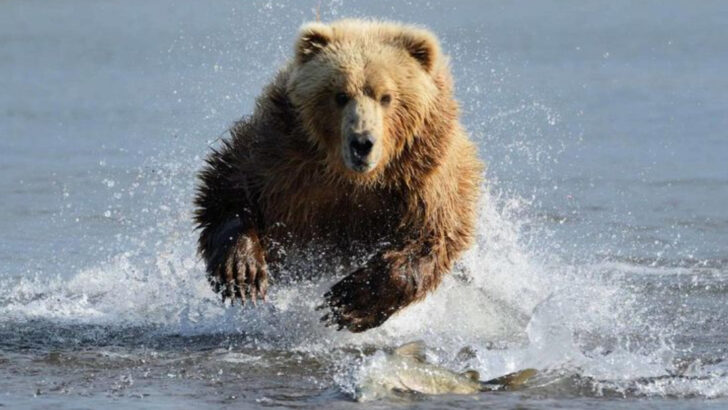Grizzly bears are back—and they’re not asking for permission.
Once pushed to the brink, these powerful predators are reclaiming their place in the wild, roaming through forests, valleys, and even territories where they haven’t been seen for generations. It’s a comeback story straight out of a nature documentary, and it’s happening in real-time.
Some states are welcoming their return with open arms. Others? Let’s just say, not everyone is thrilled about bumping into a 700-pound bear on a morning hike. But whether you’re cheering them on or cautiously keeping your distance, one thing is clear: grizzlies are making moves.
From the remote corners of the Rockies to unexpected spots further east, these states are witnessing one of the most dramatic wildlife resurgences in history. Let’s dive into where grizzlies are making a wild return—and why this comeback is impossible to ignore.
Alaska
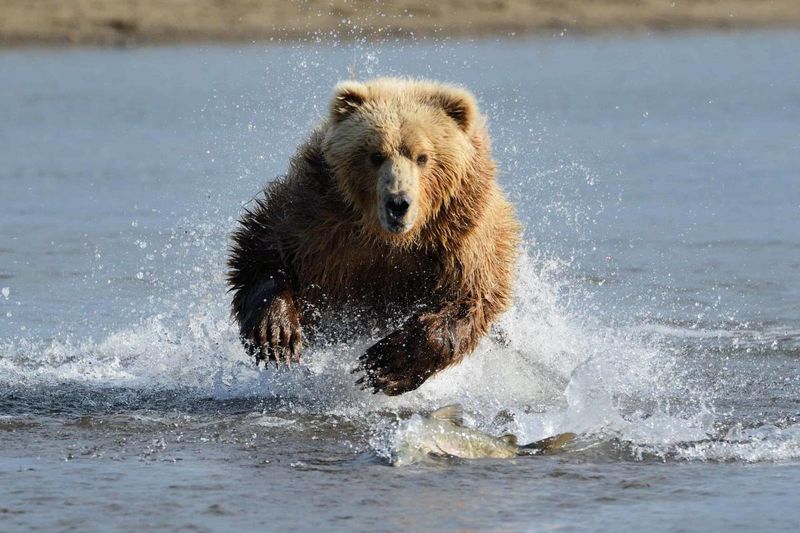
Alaska, known for its vast wilderness, is a haven for grizzly bears. The state offers an expansive habitat, ranging from dense forests to open tundra, perfect for these majestic creatures. Grizzlies in Alaska can often be spotted fishing in the many rivers teeming with salmon.
With a population of thousands, they roam freely across the state’s rugged terrain. Conservation efforts here focus on maintaining these natural habitats and ensuring the bears’ food supply remains abundant. Visitors to Alaska may enjoy guided tours to observe these incredible animals in their natural environment, emphasizing the importance of respectful wildlife viewing.
Montana
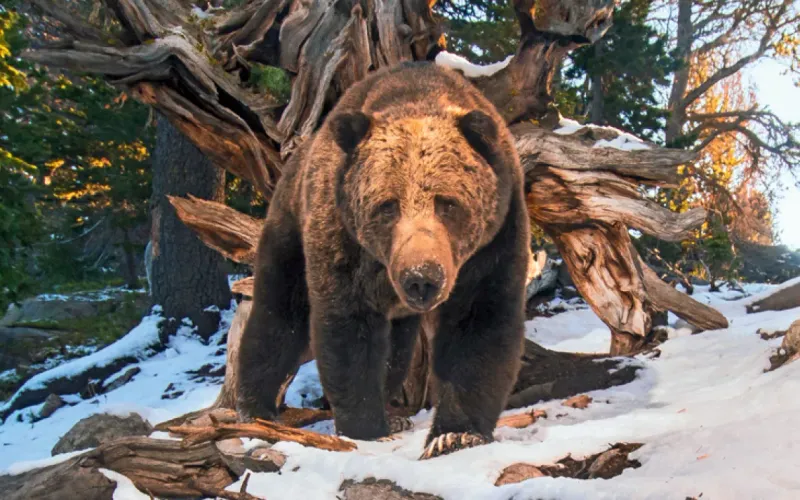
In Montana, grizzlies are thriving thanks to protected areas like Glacier National Park. These bears benefit from large swathes of undisturbed land, offering them space to roam and find food. The state’s commitment to conservation has helped boost their numbers.
Montana’s diverse landscapes, from mountains to valleys, provide ideal conditions for grizzlies. Visitors can learn about these animals through educational programs and guided tours. Efforts are continually made to minimize human-bear conflicts, preserving both grizzly populations and public safety. Witnessing a grizzly in Montana’s wild is truly a testament to successful conservation strategies.
Wyoming
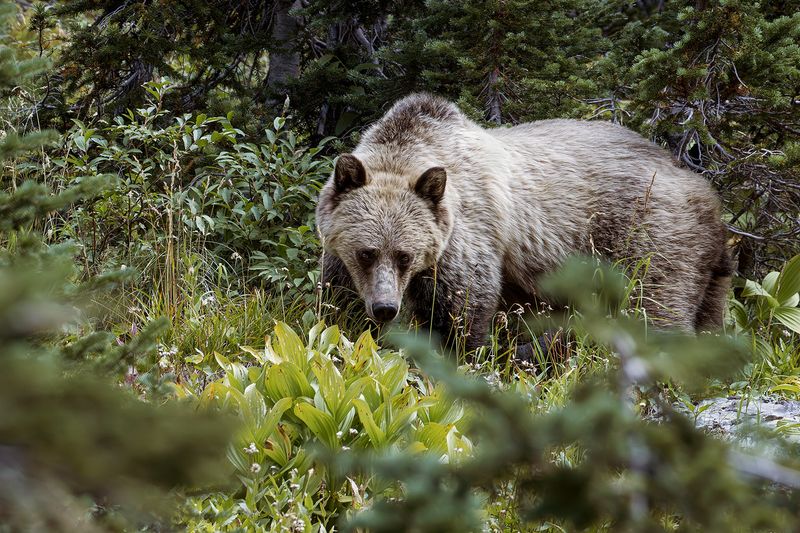
Wyoming is home to part of Yellowstone National Park, a stronghold for grizzly bears. Here, they thrive in the park’s unique geothermal landscapes, filled with rich foraging opportunities. Conservation efforts have been integral in ensuring their continued presence.
Wyoming’s landscapes offer everything grizzlies need, from abundant food sources to vast territories for exploration. Park regulations help protect these animals by managing visitor interactions and maintaining natural food chains. Observing a grizzly bear in Yellowstone is a highlight for many, emphasizing the success of ongoing conservation initiatives in the state.
Idaho
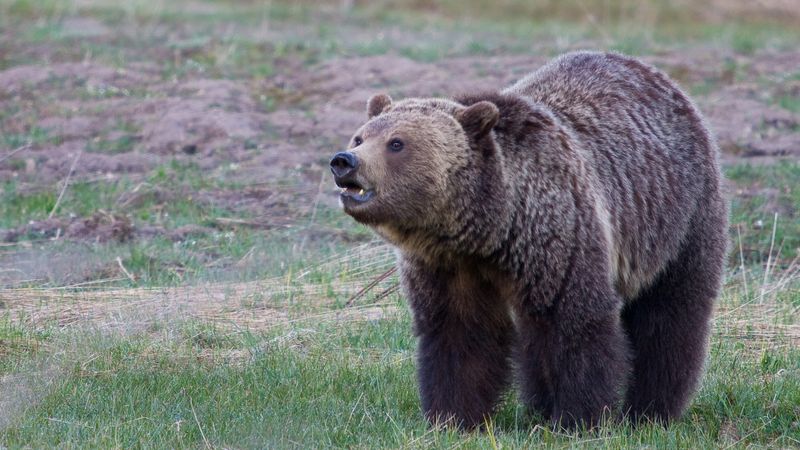
In Idaho, the Selkirk Mountains offer a sanctuary for grizzlies. These remote areas provide the seclusion and resources necessary for the bears to thrive. The state’s commitment to habitat preservation aids in supporting their growing population.
Conservation efforts focus on protecting critical habitats and ensuring the availability of natural food sources. The rugged terrain of Idaho’s northern regions is ideal for adventurous travelers hoping to spot these majestic animals. Educational programs and community involvement play crucial roles in promoting coexistence and understanding of these magnificent creatures.
Washington
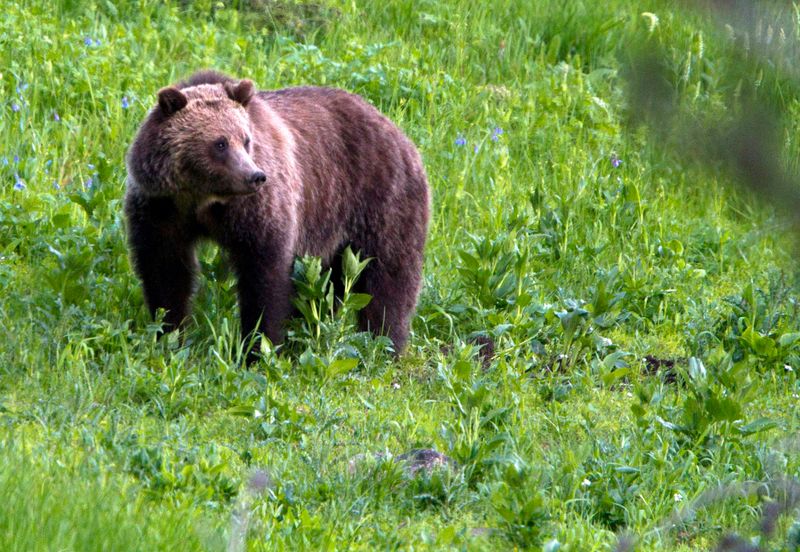
In Washington, grizzlies are making a slow, but steady, comeback in the North Cascades. The region’s pristine wilderness offers a perfect setting for their return. Efforts to reintroduce and protect grizzly populations are ongoing, with local support.
The state’s diverse ecosystems provide varied foods and habitats essential for grizzly survival. Initiatives focus on education and reducing human-bear conflicts. Visitors to the North Cascades can witness efforts to restore these iconic animals to their rightful place, highlighting the importance of continuous conservation work in the area.
Oregon
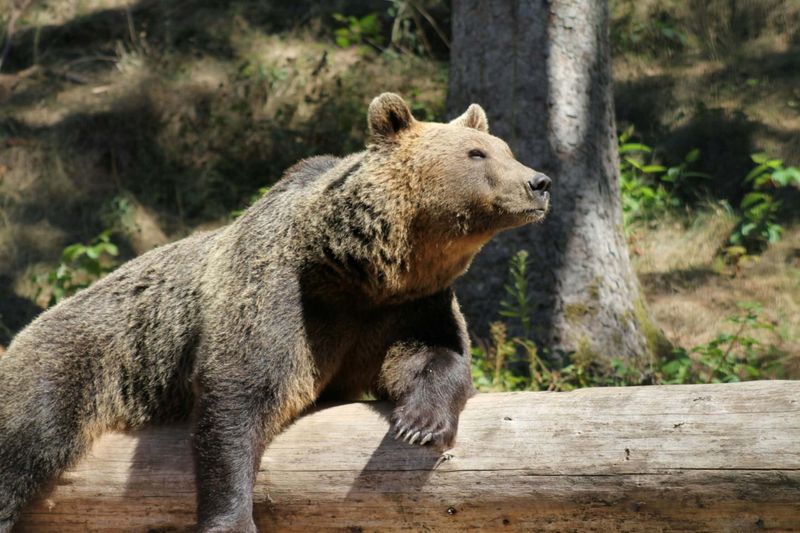
Though less common, Oregon’s Blue Mountains are seeing grizzly bears return, thanks to dedicated conservation efforts. These forests, rich in wildlife, offer a sanctuary for the bears to rebuild their numbers.
Oregon’s proactive measures focus on habitat conservation and community education to foster coexistence. The scenic landscapes of the Blue Mountains attract nature enthusiasts and wildlife photographers eager to glimpse these elusive creatures. By promoting awareness and understanding, Oregon aims to ensure the grizzly bear’s presence for future generations, highlighting the delicate balance between nature and human activity.
California
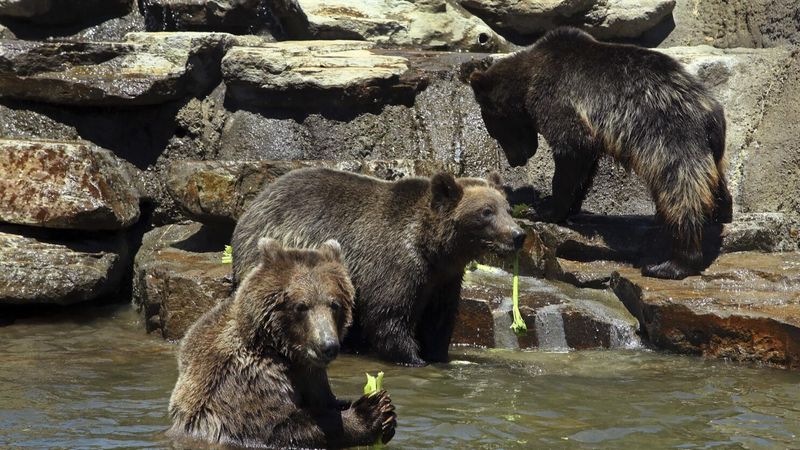
California’s Sierra Nevada is witnessing the return of grizzlies, a symbol of the state’s wild heritage. These bears are reappearing in their ancestral habitats, benefitting from extensive conservation measures and habitat restoration.
The Sierra Nevada offers diverse environments, from dense forests to alpine meadows, ideal for grizzly habitation. California promotes responsible wildlife viewing and education to minimize human-bear encounters. The state’s efforts underscore the broader movement to reconnect grizzlies with their historical ranges, balancing ecological integrity with public awareness and safety.
Colorado
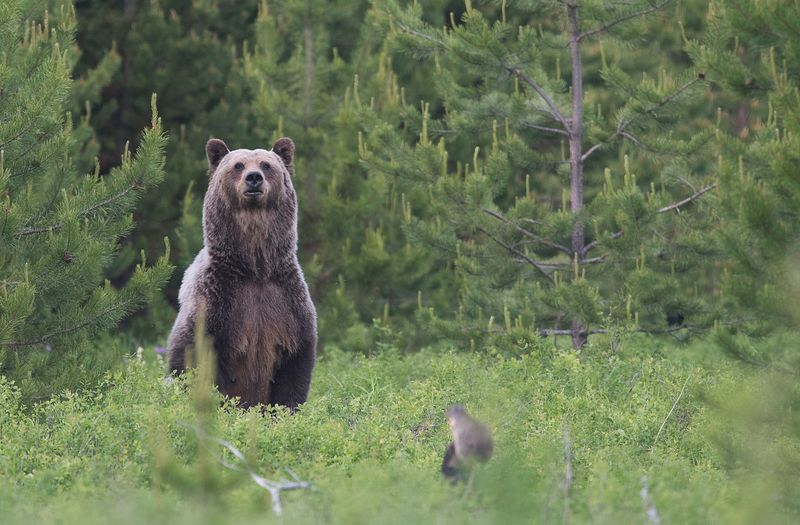
Although not as prevalent, Colorado’s Rocky Mountains are slowly becoming a haven for grizzlies. The state is focused on creating and maintaining habitats to support their gradual return. This includes preserving natural food sources and minimizing human interference.
Colorado’s landscapes are diverse, with rivers and forests providing necessary resources for bears. Conservation strategies emphasize public education and responsible outdoor activities to ensure both safety and ecological balance. The sight of a grizzly in Colorado’s wilderness is a rare and treasured experience, reflecting ongoing conservation successes.
Utah
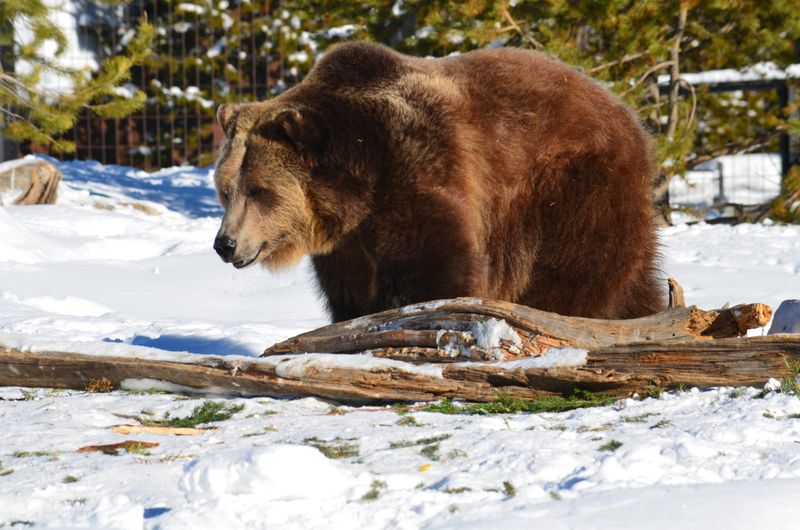
Utah’s Wasatch Range is seeing grizzlies return as conservation efforts expand. This recovery is supported by habitat restoration and public awareness campaigns aimed at fostering coexistence.
Utah’s diverse topography offers grizzlies the varied environments needed to thrive. The state encourages respectful wildlife viewing and understanding of bear behavior to reduce conflicts. By engaging communities and promoting education, Utah strives to ensure these iconic creatures can flourish alongside human populations, highlighting a commitment to preserving natural heritage.
Nevada

In Nevada, grizzly bears are making an unexpected comeback in secluded areas. The state’s commitment to wildlife preservation is paving the way for their gradual return. Nevada’s unique landscapes provide a different, yet suitable habitat for these adaptable creatures.
Efforts focus on balancing development with wildlife needs, ensuring grizzlies have access to necessary resources. Public education campaigns promote coexistence and safety, encouraging residents to appreciate and protect their wild neighbors. The return of grizzlies to Nevada underscores the importance of diverse conservation strategies across varying ecosystems.
Arizona
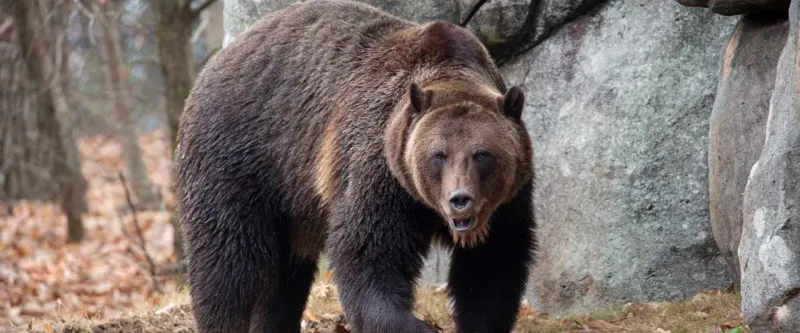
Arizona is witnessing a surprising return of grizzlies, particularly in the Grand Canyon region. This area provides a unique habitat that supports their needs, thanks to conservation efforts prioritizing habitat connectivity and protection.
The state’s landscapes, characterized by grand canyons and diverse ecosystems, offer rich opportunities for bears to thrive. Initiatives focus on reducing human-wildlife conflicts through education and strategic planning. Arizona’s commitment to restoring grizzly populations highlights the broader goal of maintaining biodiversity and ecological health in this iconic region.
New Mexico
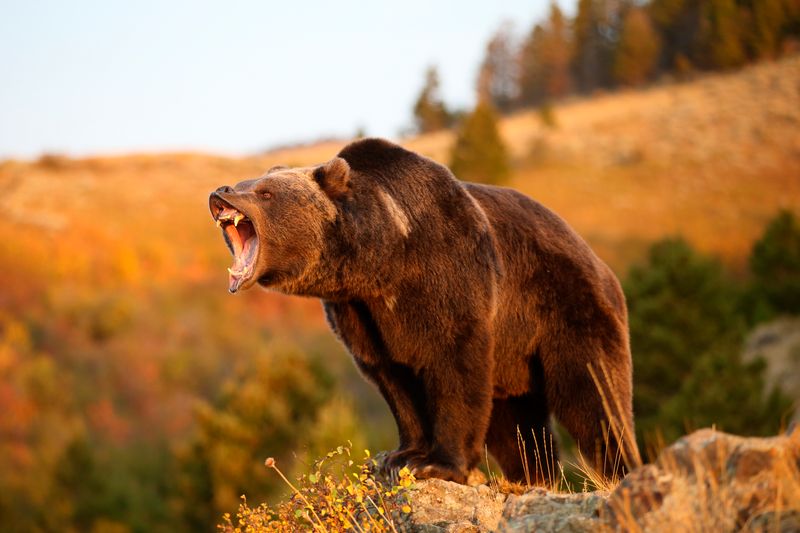
New Mexico’s Gila Wilderness is embracing the return of grizzlies as part of its conservation success story. This vast, remote area offers a sanctuary for bears to thrive, supported by ongoing habitat protection efforts.
The state focuses on ensuring sufficient food supplies and minimizing human interactions. Programs emphasize the importance of preserving natural environments and promoting sustainable coexistence. The presence of grizzlies in New Mexico’s wild landscapes serves as a reminder of the power of dedicated conservation work and the importance of protecting natural habitats.
North Carolina
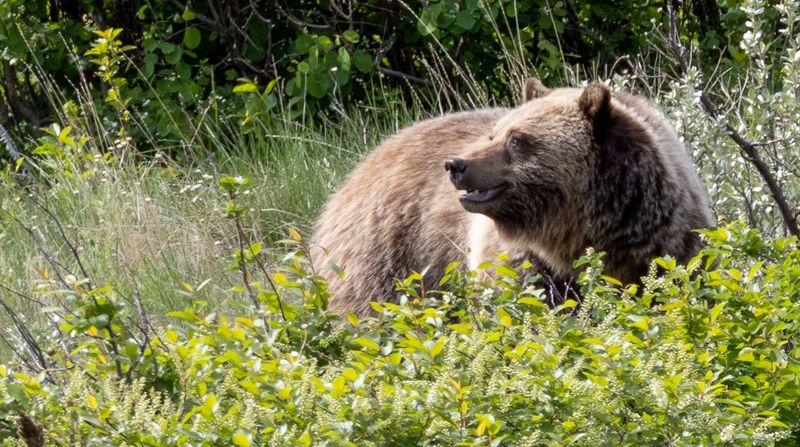
In a remarkable ecological twist, North Carolina’s Great Smoky Mountains are welcoming back grizzlies. The state’s extensive conservation efforts focus on restoring natural habitats and educating the public.
North Carolina’s lush, varied landscapes offer ideal conditions for grizzlies, from food sources to shelter. The state emphasizes learning opportunities and community involvement to support coexistence. The return of grizzlies to this region highlights a commitment to wildlife preservation and ecological balance, demonstrating the success of collaborative conservation strategies.
Tennessee
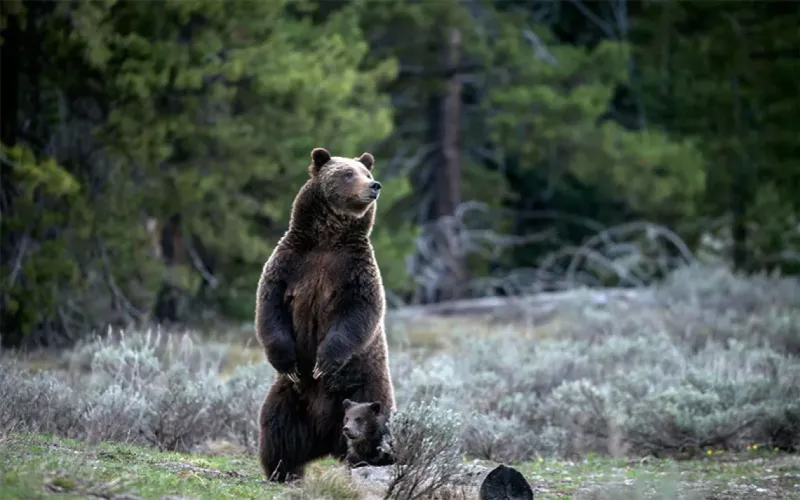
Tennessee’s Appalachian Mountains are witnessing the resurgence of grizzly bears in their storied landscapes. The state’s conservation initiatives focus on creating sustainable habitats and minimizing conflicts.
Tennessee’s diverse ecosystems provide grizzlies with the resources needed to thrive. Public education and wildlife management programs foster a sense of coexistence and respect for these powerful animals. The presence of grizzlies in Tennessee underscores the success of conservation efforts and highlights the ongoing need to protect and preserve natural habitats for future generations.
South Dakota
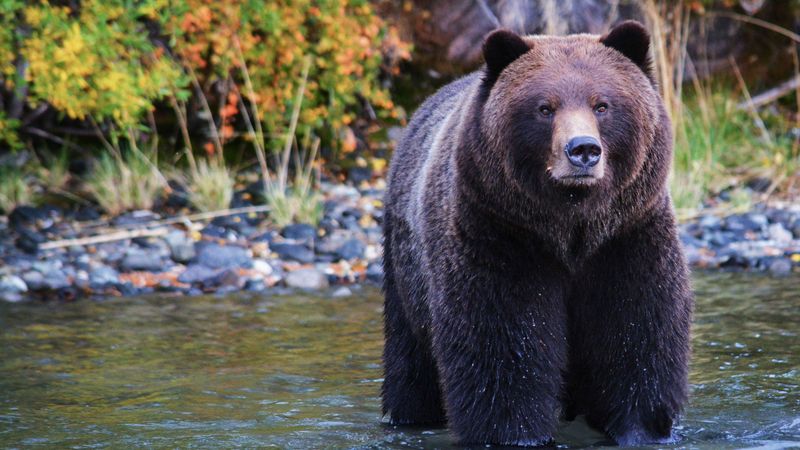
South Dakota’s Black Hills are seeing a resurgence of grizzly bears, thanks to focused conservation efforts. The area’s diverse habitats provide ideal conditions for these majestic creatures to return.
Efforts in South Dakota emphasize habitat preservation and public awareness, aiming to support the bears’ natural behaviors while minimizing human interference. The state promotes educational initiatives to foster understanding and appreciation of grizzlies. Their return to the Black Hills symbolizes a significant achievement in wildlife conservation, demonstrating the positive impact of coordinated efforts to restore natural ecosystems.

